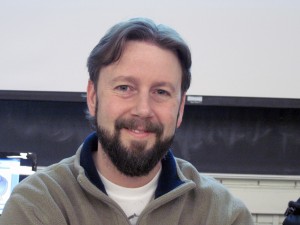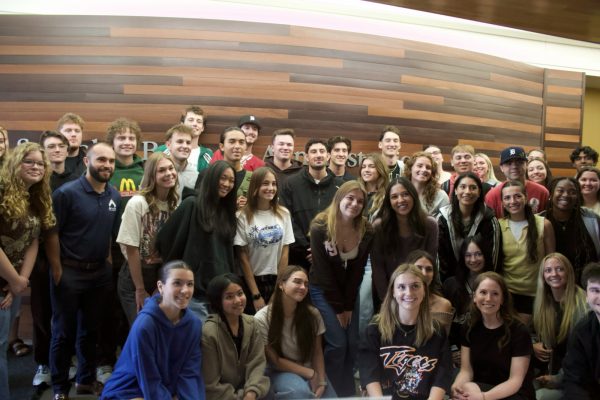Anatomy class gives students opportunity to work with human cadavers

Christopher Kauhn
With over 130 undergraduate majors for students to pursue, some of Oakland’s more unique classes get overlooked.
Deep in the basement of the Science and Engineering Building is the home to a very special class. Biology 206, also known as Human Anatomy Laboratory, is not only known for its difficulty, but for its use of hands-on study tools.
Students are allowed to use human cadavers to get a literal “hands-on” approach to studying the human body.
Students outside the medical field tend to shy away from classes such as anatomy, the study of the structure of the human body. But for those who are undecided, anatomy could be a gateway.
Professor Christopher Kauhn has helped students in BIO 206 explore their way through the human body.
“Originally I wanted to pursue dentistry,” Kauhn said. “But I realize I liked teaching anatomy so much more.”
Kauhn’s diverse teaching style has helped to make the burden of taking an anatomy a little easier. His use of real-world examples and personal stories help to bring everything together when studying the material.
“The class is a challenge all its own,” junior and pre-med major Miranda Long said. “But overall it’s more than worth it.”
Kauhn is a local from the area and received both his bachelor’s and master’s degrees from OU.
“Way back, I was trying to decide on where I wanted to go to school,” Kauhn said. “Oakland had always been number one on my list.”
During his time at Oakland, Kauhn was offered many opportunities to take unique classes and to be a teacher’s assistant in some of those courses.
He attributes much of his success to Dr. Mary Bee, a professor at Oakland.
“Dr. Bee was a mentor to me,” Kauhn said. “She gave me opportunities to do things I never thought I would be able to do.”
After completing classes with Dr. Bee, Kauhn was asked to become a teacher’s assistant for various classes at Oakland, Wayne State and University of Detroit Mercy. He has brought many of the skills learned through those experiences to his own classroom.
Kauhn teaches a hefty course load at OU, including five anatomy laboratories and one lecture class. Even with the heavy course load, Kauhn manages to keep his students inspired and moving forward.
“The laboratories I teach are different than a lot of other classes here,” Kauhn said. “It’s very different to see something in a PowerPoint than to see and be able to physically touch it in person.”
Kauhn’s classes cover a variety of topics such as bones, muscles, the nervous system and the various body systems, but even professors have their favorite subject.
“I love all aspects of anatomy,” Kauhn said. “But I always get so excited when we get into discussing the nervous system.”
The laboratory offers students a chance to see and physically touch parts of the body to help with comprehension. The spinal cord, brain, muscles and bones are just a handful of things that are available for students to use.
This is the first semester that Oakland is running the lecture and lab at a congruent schedule, allowing some relief for the students who take them.
“At first I was worried about taking both classes at the same time,” Long said. “But after being in the classes everything has worked out wonderfully.”
When learning anatomy, memorization is the key to understanding information.
“When my students ask how to study, I tell them repetition is key,” Kauhn said. “Just take in little bits of information at a time and it will all come together in the end.”
With the new schedule for his classes, Kauhn said there has been a great improvement in his students’ grades.
“In the beginning I struggled a bit with how to study the material,” Long said. “But after talking to Professor Kauhn I was able improve my grade immensely.”
Kauhn has an “open door policy” to his students by encouraging them to meet with him about whatever questions they may have.
“I try to cater to my students’ needs,” he said. “It allows both my students and I to better ourselves.”
Oakland University will be the host of the first Anatomy Memorial Ceremony to honor those who dedicated their bodies to science, giving appreciation for individuals who make classes like human anatomy laboratory possible. The event will be held Thursday, April 11 from 6 to 7 p.m.





